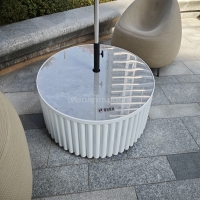Welcome to the website for landscape facilities products and knowledge.
What are the most important design considerations for urban versus rural installations?
When planning installations in urban versus rural settings, designers must address distinct challenges and opportunities. Urban areas demand high-density solutions, efficient use of limited space, and integration with existing infrastructure. Key considerations include traffic flow, pedestrian accessibility, and compliance with strict zoning laws. Sustainability is critical, with green roofs, renewable energy, and waste management systems often prioritized.
In contrast, rural installations require adaptability to vast, often uneven terrain. Designers must account for lower population density, limited utilities, and environmental preservation. Off-grid solutions like solar power and rainwater harvesting are common. Community engagement is vital, as rural projects often serve tight-knit populations with unique cultural and economic needs.
Both settings benefit from modular designs and scalable solutions, but urban projects emphasize vertical expansion while rural ones focus on horizontal integration. Balancing functionality, aesthetics, and long-term resilience ensures successful outcomes in either context.
Related search:

Recommendation
Round metal tube border design table with tempered glass or granite countertop on the top.